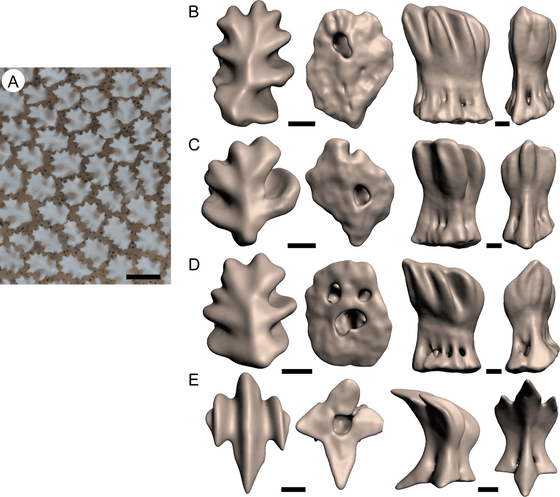Why do whale sharks have a large number of 'teeth' in their eyes?

The
Armored eyes of the whale shark
https://journals.plos.org/plosone/article?id=10.1371/journal.pone.0235342
Armor for the eyes! ? New facts about whale sharks | Press Releases | Okinawa Churashima Foundation
http://churashima.okinawa/pressrelease/1593736601/
The research was announced by the research team of Taketeru Tomita and others from the Animal Research Laboratory, Okinawa Churashima Research Center . The Okinawa Churashima Aquarium, which is run by the foundation, is one of the largest aquariums in Japan and has been the first in the world to successfully breed long-term whale sharks. According to the research team, the successful management and maintenance of whale sharks in the aquarium has made it easier to access living specimens and made it possible to study whale shark eyes.
The first subject to be surveyed was a whale shark eye that was dissected by the staff of the Okinawa Churaumi Aquarium in 2017, and it seems that its anteroposterior diameter was 65.0 mm. This eyeball was scanned with a micro CT scanner of Okinawa Institute of Science and Technology Graduate University and modeled in 3D. As a result, it was found that a large number of tooth-like projections were distributed around the iris, that is, on the surface of the white eye of the whale shark.
In the figure below, A is a photograph of an actual eyeball, C is a 3D model of the dentate process seen from the front, and D is the same 3D model seen from the side.

And the following is an enlarged view of the distributed tooth-like projections. A is a magnified view of aggregated dentate projections, B to D are 3D models with one dentate projection, and E is a projection on the body surface. Comparing B to D and E, it can be seen that the projection on the eyeball and the projection on the body surface are completely different in shape.

In addition, the diver approaches the three live whale sharks with the camera and observes the eye movements. Then, when an object such as a diver approached, it was found that the eyeball behaved like retracting into the back of the hole in the skull.
The movement of the whale shark's eyeballs captured by the cameras of the divers swimming side by side can be confirmed in the movie from the link below. It was also found that the whale shark not only retracts the eyeball, but also rotates the eyeball at the same time. This function has been confirmed in a very small number of sharks, but it is the first time it has been confirmed in whale sharks.
S2 Video. Eye retraction of Specimen A.
https://doi.org/10.1371/journal.pone.0235342.s002

The research team found that whale sharks have no eyelids and the cornea and conjunctiva are exposed to the eye like other vertebrates, leading to the risk of mechanical damage to the eye due to the change of surface dermal tissue into dentate processes. I'm guessing it is helping to reduce the.
The whale shark has been thought to be an ecology that does not depend on vision because the diameter of the eye is quite small, less than 1% of the total length, and the midbrain that processes visual information is also relatively small. However, since the research revealed that whale sharks had 'advanced functions to protect the eyes', the research team pointed out that whale sharks still think that visual information is important. The whale shark was actively tracking the diver as it swam 3-5 meters away, which suggests that the whale shark may be using vision to perceive nearby objects.
'Future research will need to focus on the optical sensory capabilities of the whale shark's visual system, such as visual field, visual acuity, color range, and sensitivity,' said the research team.
Related Posts:







